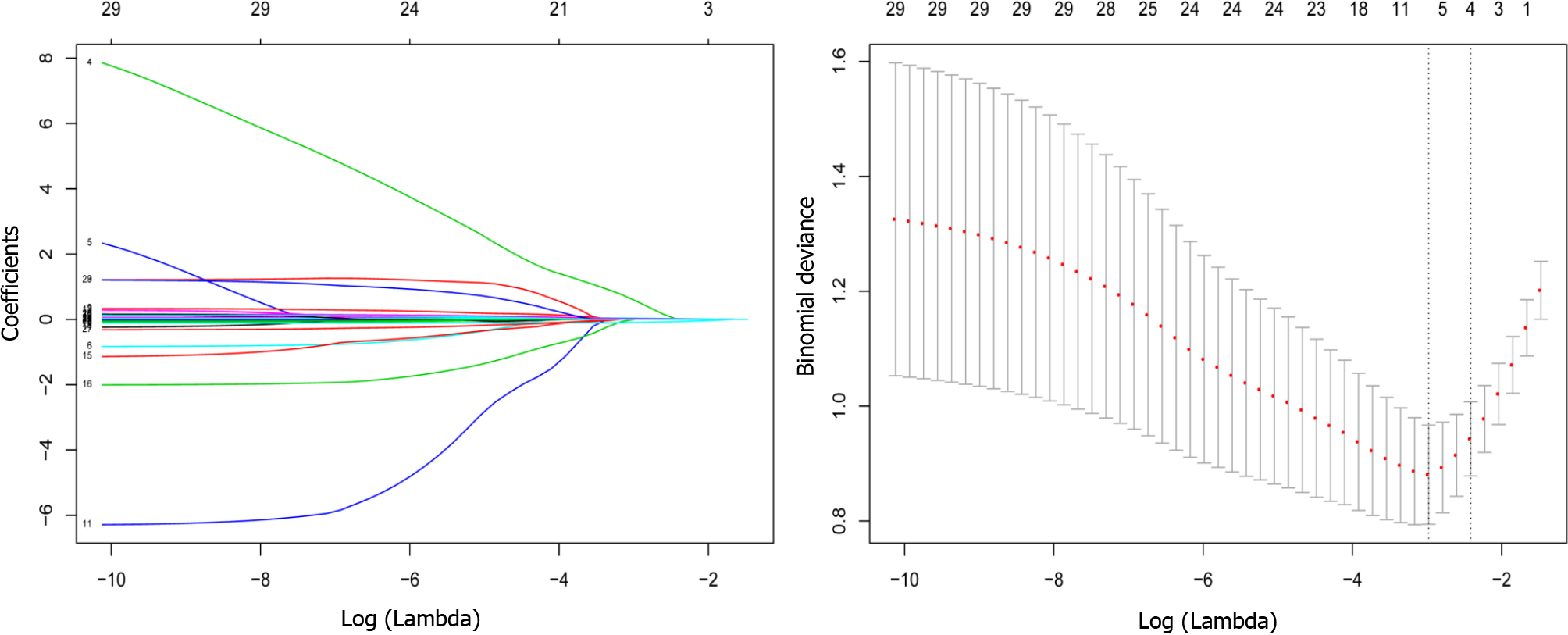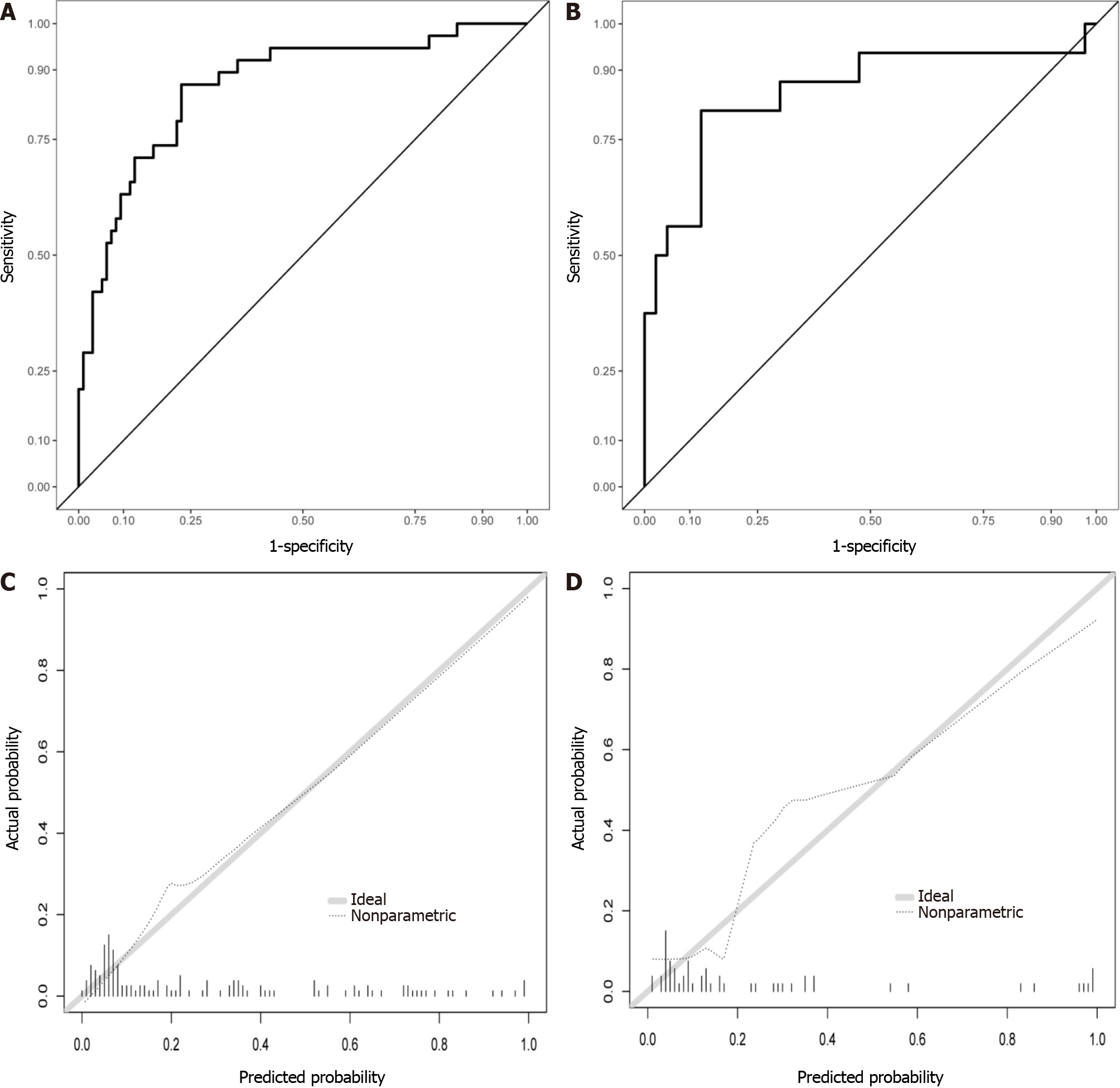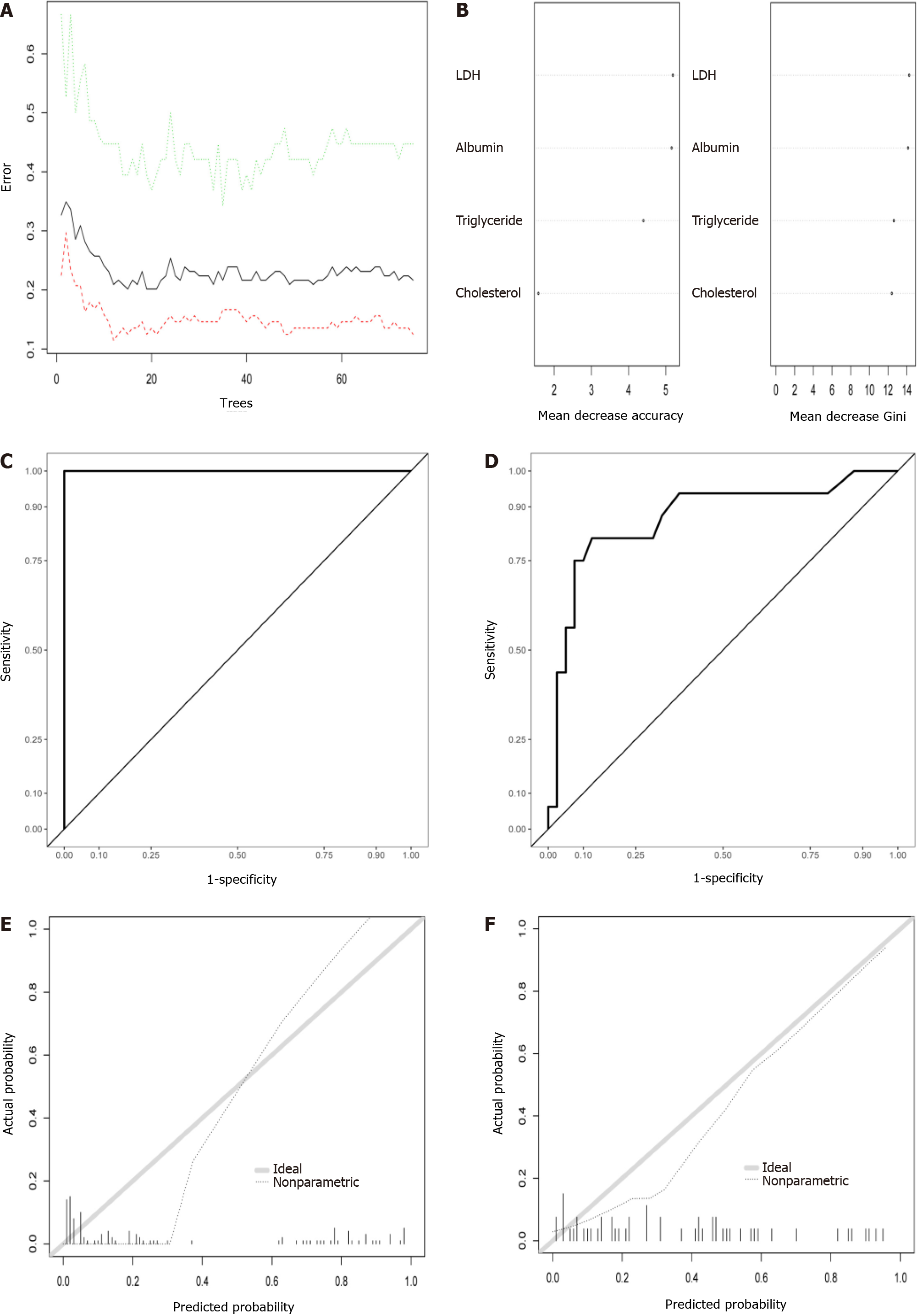Copyright
©The Author(s) 2022.
World J Gastroenterol. Apr 21, 2022; 28(15): 1588-1600
Published online Apr 21, 2022. doi: 10.3748/wjg.v28.i15.1588
Published online Apr 21, 2022. doi: 10.3748/wjg.v28.i15.1588
Figure 1 Flow chart of the study.
APIP: Acute pancreatitis in pregnancy; MAIP: Mild acute pancreatitis in pregnancy; MSIP: Moderately severe and severe acute pancreatitis in pregnancy.
Figure 2 Selection of risk factors of moderately severe and severe acute pancreatitis in pregnancy using the least absolute shrinkage and selection operator logistic regression algorithm.
Least absolute shrinkage and selection operator coefficient profiles of the 29 candidate variables. For the optimal lambda, 4 features with a non-0 coefficient were selected.
Figure 3 Nomogram for predicting moderately severe and severe acute pancreatitis in pregnancy.
Nomogram including four risk factors (lactate dehydrogenase, triglyceride, cholesterol, and albumin were identified as risk factors) to predict moderately severe and severe acute pancreatitis in pregnancy. LDH: Lactate dehydrogenase.
Figure 4 Performance of the nomogram in moderately severe and severe acute pancreatitis in pregnancy prediction.
A: Receiver operating characteristic curves in the training set; B: Receiver operating characteristic curves in test set; C: Calibration curves of training set; D: Calibration curves of the test set.
Figure 5 Development and assessment of the random forest algorithm in moderately severe and severe acute pancreatitis in pregnancy prediction.
A: Relationship between out-of-bag error and number of trees. In total, 75 trees are selected to establish a random forest model; B: Feature importance; C: Receiver operating characteristic curves in the training set; D: Receiver operating characteristic curves in test set; E: Calibration curves of training set; F: Calibration curves of the test set.
- Citation: Yang DJ, Lu HM, Liu Y, Li M, Hu WM, Zhou ZG. Development and validation of a prediction model for moderately severe and severe acute pancreatitis in pregnancy. World J Gastroenterol 2022; 28(15): 1588-1600
- URL: https://www.wjgnet.com/1007-9327/full/v28/i15/1588.htm
- DOI: https://dx.doi.org/10.3748/wjg.v28.i15.1588













